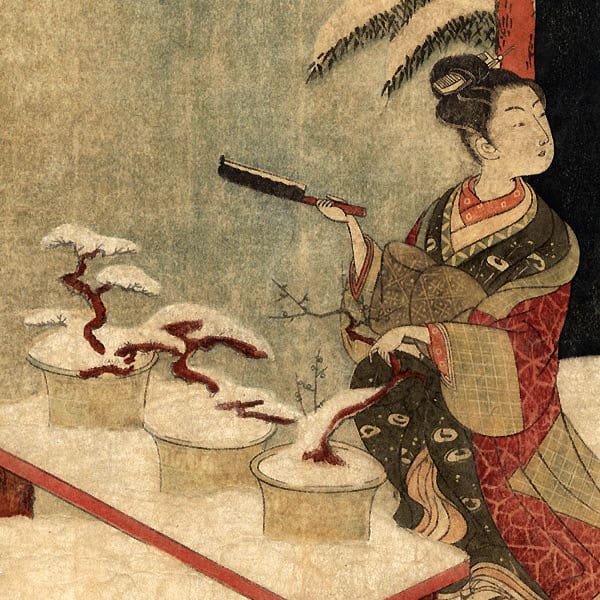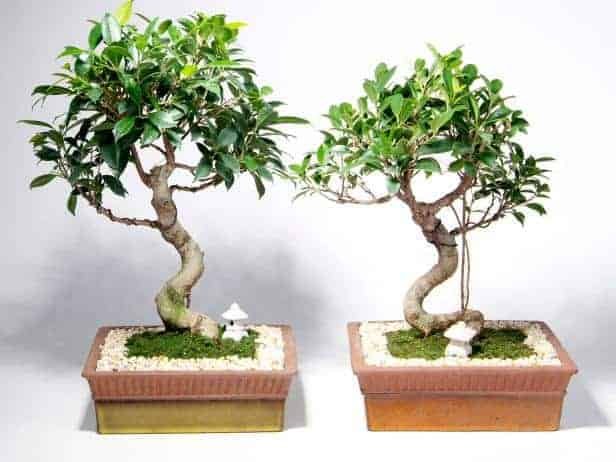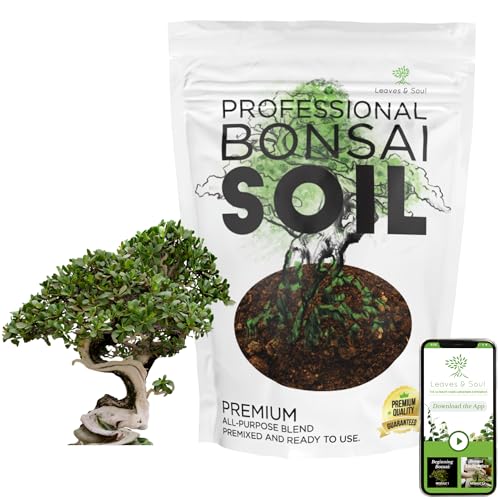Bonsai trees are so beautiful that everyone will want to decorate their home with them. It is an art which was derived from Japan, and now the whole world follows it. For many people, the 1st come across the bonsai/bonzai tree can be either a garden nursery or a department store. Each year, millions of those tiny trees are imported from Japan, China and some other countries to gift shops. Unfortunately, most of them die without any idea about Bonsai Tree Care. The reason can be either due to excess care or negligence by their excited new owners.
It is good to know that keeping a bonsai tree alive and healthy isn’t as complex as caring for other potted plants. You have to understand or know the difference between the common indoor plants’ pot and shallow bonsai trees’ container so that you can care for it accordingly.
If you are in love with your bonsai trees, you need to know something about bonsai plant care. Feeding, pruning, and watering the bonsai trees are straightforward. You can very easily and quickly learn the entire gardening technique even if you don’t have any prior experience.
The practical skills needed to sustain and shape the bonsai plants are pretty simple to acquire. Pruning its roots and branches with the help of a wire are some of the easy methods which are alike to those engaged by most of the admired Japanese masters. Once you learn this art, you will never forget it and it will help you to grow a passion for your bonsai hobby. Always remember, even the top bonsai masters were once learners. You can get to know how to cultivate and care for one easily by learning.
Table Of Contents
So, What is A Bonsai Tree?
This is a question which might be running in your mind now. To some, a bonsai tree is a cruelly stunted tree limited to a very tiny pot. For some, it is a work of art resulting in several years of care, attention and patience. But to the massive majority, this is the most impressive or incredible miniature that represents a natural tree. Perhaps, I should begin by telling what the bonsai tree isn’t.
The bonsai plants are never genetically dwarfed; neither are they treated with any magic mixture for reducing their size. Moreover, they are never kept small by unkindness. The bonsai trees are just given adequate amounts of water, air, nutrients and light to sustain them properly so that they can come out beautifully in a nice shape.
Literally, the word “bonsai” has been translated from the Japanese language which means “tree in a pot”. The tree and the pot form a single sweet unit wherein the shape, colour and texture of one complements the other. Then the bonsai tree has to be shaped. When it comes to planting bonsai trees, it is not sufficient for the plant to just put it and then allow Mother Nature to take up its course.
If you are doing this, then the result would be just like the other normal ones. There wouldn’t be any difference between the normal trees and the bonsai trees. Each twig and branch of the bonsai tree should be eliminated or shaped until you get the desired shape. All the time, the bonsai tree has to be kept in ideal conditions.
A bonsai can neither grow an infestation of aphids in the same way a wild tree can nor can it send its long roots to reach the water. A bonsai tree will entirely depend on the one who owns it. After reading this, don’t be deterred because it is not as hard as it sounds. It is not as difficult as you care for other potted plants.
A Fascinating Bonsai Tree History
Humans have been growing plants and trees for ages. They have been cultivating for their needs, food, survival, medicinal purposes, but only a few grow for their beauty. When plants were containerized for decoration, it was due to their foliage or flowers. But during an event in China, there emerged a fresh concept which was this – creating some miniature representation of the natural landscapes and then storing them in containers.
Wall paintings that make us go back to the “Han Dynasty”, which is around 200 BC ultimately show some landscapes that were made out of rocks, grasses, trees etc. Over 2000 years afterwards, this penjing was still taken as the most central element of Bonsai culture in China and some far eastern countries.

There are lots of legends which tell us about the spiritual consequences of penjing and almost all of them include fiery dragons or powerful emperors.
One of the overweight emperors found his travelling very tiresome and hence he demanded his ministers to build a miniature model of his entire empire so that he could quickly review or inspect his entire area from his bedroom. The practice of growing sample trees in the pots emerged afterwards in China and exactly when it emerged still remains a big mystery.
These early samples portrayed rugged and gnarled trunks resembling birds or animals. These were known as “pun-sai”.
Bonsai in Japan
In the 11th and 12th centuries, there was a great cultural movement in China and the neighbouring countries of China. Specifically, the people of Japan readily accepted most of the art done by the Chinese and their philosophies. Possibly, the most critical influence might have been China’s Zen religion, where the monks played the lead role in initiating the Bonsai in Japan. Soon Bonsai grew in popularity and got established in Japan’s culture. It was then practised in both aesthetic and cultural levels.
| # | Preview | Product | Rating | Price | |
|---|---|---|---|---|---|
| 1 |

|
The Bonsai Beginner's Bible | No ratings yet |
$14.99 |
Buy on Amazon |
| 2 |

|
Bonsai for Beginners: The Essential Guide to Learn How To Grow and Take Care of a Bonsai Tree For... | No ratings yet |
$17.97 |
Buy on Amazon |
| 3 |

|
Bonsai for Beginners: A Step-by-Step Guide to Growing, Shaping, and Thriving with Your Bonsai | 2024... | No ratings yet |
$13.99 |
Buy on Amazon |
| 4 |

|
Bonsai for Beginners: 3 Simple Strategies for Starting a Bonsai Learn How to Plant, Grow, and Care... | No ratings yet |
$13.99 |
Buy on Amazon |
| 5 |

|
Bonsai Tools Kit- 24 PCS Bonsai Tree Kit Tools for Beginners, Bonsai Tool Set Bonsai Starter... | 422 Reviews |
$29.89 |
Buy on Amazon |
| 6 |

|
Indoor Bonsai for Beginners: Selection - Care - Training | No ratings yet |
$11.24 |
Buy on Amazon |
Bonsai Tree Care: Tips To Care for Bonsai
It is very easy to spend some dollars and get a bonsai tree, but people often fail in bonsai plant care. This is what this article literally speaks about – how to take care of a bonsai tree?. Taking care of the bonsai tree is essential. It is no doubt that all trees and plants require enough amount of air, water and sunlight, but there is a massive difference between sunshine and sunlight, between waterlogged soil and moist soil, and between draught and fresh air.
Leaves require some quantity of sunlight so that they can photosynthesize and nourish themselves. In extremely shady situations, the leaves can grow up larger to gather enough sunlight as possible. The inter-nodes will easily increase when the plants try to extend their shoots in order to reach the canopy overhead to the sun. With a good amount of sunlight, leaves are smaller and even the inter-nodes are shorter. Thus different species will take different amounts of sunlight.

1. Sunlight:
It is really important to know the natural habitat of a bonsai. Junipers and pines which are grown in mountain areas will naturally get adapted to tolerating full sunlight. A juniper or a bonsai pine, set aside close to the wall, can grow more vigorously than on the open side. Proper Sunlight is a must for bonsai tree care steps.
There is a high possibility that the bonsai plant will begin to die if it is in a shaded part. On another side, keeping an azalea or maple or plants of those valleys and woodland margins in exposed conditions (side-way from the sun) can quickly produce vigorous and healthier growth.
The red maple leaf will retain its colour for a longer time if they are reserved in a semi-shade. Talking about bonsai in overall, you need to give them perfect sunlight. The sunlight should neither be very high nor too less. You must keep turning your bonsai plant 90 degrees every few days. In this way, every part will acquire an equal amount of sunlight.
2. Water:
Overwatering your bonsai trees can be extremely dangerous, and not watering will lead to dying. If the bonsai plant is potted properly along with a good level of free-draining soil, then it can never be a problem. But still, there are some things to know about:
- You need to use a good rose-spray attachment to the watering can. An excessive force of water can wash away surface soil and then compresses the rest.
- You need to fill the gap between the pot’s rim and the soil’s surface with the help of water so that it can fully soak in. Now you will literally see that water will be emerging out from drainage holes of a pot.
- If there is no water emerging from the holes even after the above 2 applications, then it means that the soil is unhealthy or in a very poor condition. Or it can be the reason that holes might have been blocked. So you need to unblock the holes.
- Ensure that you are watering the entire surface of the soil. The part at the back of the trunk is often neglected while watering out of hurry which in turn can quickly weaken or spoil the roots.
- Each of the bonsai plants requires water in unique measures. You need to prevent yourself from watering same quantities of water each day.
- Never water the bonsai trees in full sunlight. The leaves of bonsai will always enjoy being wet during the watering time and provided that it isn’t in complete sunlight at that particular time.
3. Air:
No doubt that humans, trees and plants require some fresh air to be healthy. When there is deprived air circulation around the roots, branches and leaves, then there will be poor growth. It also creates bacterial and fungal spores. The indoor bonsai trees, which spend their entire life in a smoke-filled or centrally heated room tends to suffer just like humans.
The inner shoots can easily wither out, and the soil and trunk can easily be covered with algae. To sustain proper air circulation both indoors and outdoors, the bonsai must be kept at waist height on its stand or on the slatted benches outside. It is essential that you realize the difference between the draughts and fresh air. Draughts are nothing but rapidly moving current, which is colder when compared to surrounding air.
The effects of draughts can be devastating and thus causing shedding and yellowing of leaves. Thus the bonsai plants die soon. The outdoor winds can be very harmful to a bonsai. A strong wind can be very harmful to a bonsai. It reduces its efficiency. The roots of the bonsai need to breathe to function correctly. The soil composed of tiny particles or compacted soil will never contain adequate air space for maintaining healthier roots.
What soil to use for bonsai?

Most of the bonsai growers in Japan use commercial soil known as “Akadama ”. This soil is coarse, clay and hard which contains natural granular particles that range from 1 to 6 mm.
This soil holds water and has excellent drainage. But this soil is a little expensive on the west side. You can even make your own mixture if you cannot afford it. Reliable, basic and good bonsai soil will comprise 2 ingredients which are:
- Organic matter
- Grit or coarse sand
The water retention will be given by organic matter like composted bark, leaf mould, peat etc. Ensure that this organic matter isn’t decomposed so much that it crushes into dust as it dries. If the moist organic stuff is squeezed tightly with the help of your hands, it should quickly spring apart. All the lumps that are larger than a quarter inch or 5 mm should be first removed or broken.
The remainder should be then filtered to eliminate all the particles which are smaller than that of 2 mm. The particles even smaller than this will automatically be washed away at the pot’s base.
Separate when the materials are damp because if you do it when it is wet, certain particles might crumble into dust. Free draining, well ventilated and open structure is ensured by adding coarse sand or grit.
Even this has to be sifted to retain some particles from 2mm to 5mm. You need to use only horticultural sand or grit. Never try to use the builders’ sand because it has certain impurities that harm the plants. Now you will have to mix these 2 ingredients in equal proportions. It is always ideal to do this when the organic matter is damp. If it’s wet, then you will not be able to mix it correctly, and if it’s dry, then it will end up breaking down into dust.
| # | Preview | Product | Rating | Price | |
|---|---|---|---|---|---|
| 1 |

|
Bonsai Soil by Perfect Plants - 2qts. | Premium All-Purpose Mix Bonsai Tree Varieties | No ratings yet |
$14.49 |
Buy on Amazon |
| 2 |

|
Bonsai Soil by The Bonsai Supply – 2qts. Professional Bonsai Soil Mix | Ready to use| Great for... | No ratings yet |
$15.97 |
Buy on Amazon |
| 3 |

|
Harris Bonsai Soil, All Purpose Premium Blend for Outstanding Growth, 2qt | No ratings yet |
$14.99 |
Buy on Amazon |
| 4 |

|
Doter Bonsai Soil Mix Ready to Use (1qt), Premium Fast Draining Organic All Purpose Potting Mix for... | No ratings yet |
$8.99 |
Buy on Amazon |
| 5 |

|
Doter Bonsai Soil Mix 2qt Ready to Use, Organic Bonsai Tree Soil Fits for Small Bonsai Pot, Suitable... | No ratings yet |
$9.99 |
Buy on Amazon |
| 6 |

|
Bonsai Soil Premium All Purpose Blend | Pre-Mixed Ready to Use for Fast Drainage | Large 2.2 Quarts... | No ratings yet |
$17.94 |
Buy on Amazon |
| 7 |

|
Bonsai Outlet Bonsai Soil Mix - Tinyroots All Purpose Bonsai Soil Mix Ready to Use Blend, Used for... | No ratings yet |
$16.95 |
Buy on Amazon |
Conclusion:
Having Bonsai in your home or garden will bring calmness and a zen-like atmosphere, so maintaining the Bonsai tree growth is very important. You can learn more from those Internet resources like youtube, where a lot of people teach how to grow bonsai trees at home the easy way. So do understand the basic tips and bonsai tree care guides in this article.
We love to hear your feedback and comment on the Bonsai tree care guide, and share and help others as well.














